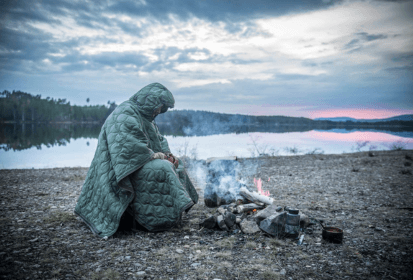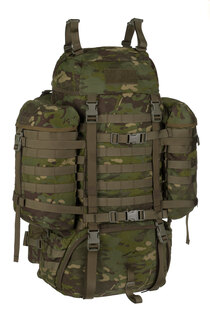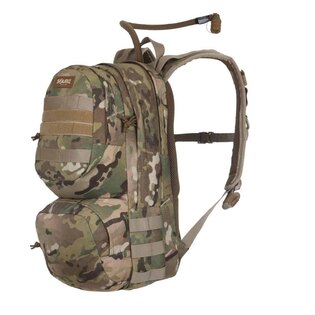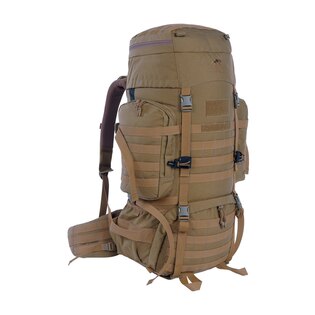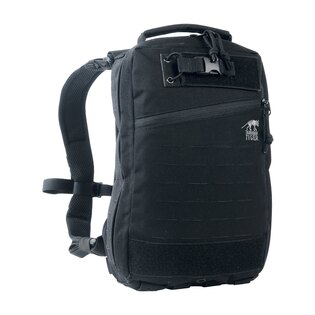How to survive an unplanned night in the wilderness?
Man proposes, life disposes. Imagine you plan to go out into the wilderness for just half a day or a day and then return to the stove of your home or rented guesthouse. But later in the evening, you find yourself lost and you have got no other choice but staying overnight out in the wild. Could you handle this even with minimal outdoor equipment?
Since you originally did not fully count on spending the night outdoors, you probably will not have sufficient equipment with you, such as a warm sleeping bag or a sleeping mat. And you will have to plan accordingly. Therefore, prevention is the basis. Even if you don't plan on spending the night in nature, it's still better to be equipped with extras even for a day trip in case something goes wrong. Although more often than not, something goes wrong when you don't have the necessary equipment with you.
Preparation and planning
Any trip to nature requires good preparation. Even if you are only going to walk 10 kilometers, find out about the terrain, weather and possible risks in advance. There are plenty of resources on the Internet, just choose the right one. If you are traveling alone, inform someone close to you of your plans and agree on what to do in case of an emergency.
It is also advisable to have a fully charged phone with you before the trip, ideally with a power bank. However, if there is no signal, this will not help you much. Therefore, pack other equipment in your backpack – even for the smallest trip.

In autumn and winter, it gets dark very early. Just a little delay and you can easily be surprised by the darkness on the way.
Other basic equipment
The most basic piece of equipment that will definitely not get lost in your backpack is a knife, a universal tool that you will use for cutting, preparing food and other tasks. The choice of knife depends only on you and your needs, however, from our experience we would recommend either a smaller knife with a fixed blade or a larger folding knife.
You can also use a knife to build a shelter, which we will talk about later. In any case, the most important thing for boosting morale is probably the ability to make a fire. That is why you should add a lighter or a flint to your backpack in advance. Of course, there are situations when making a fire is not recommended or is outright prohibited, especially during the dry months in the forest. But in an emergency and in an attempt to survive, you will probably sacrifice a possible fine with the excitement that someone found you.
Another basic piece of equipment is a water container. All you need is a one-liter thermos or a mess tin, into which you can take water from a well or, in winter, snow (ice) to melt. If you don't have anything for collecting and carrying water, you're in trouble. Because having enough fluids is essential, especially in emergency situations.
Finally, pack a first aid kit with basic equipment. Bandages, some disinfectant, plasters and possibly a tourniquet for situations that go wrong. You can easily make a splint from a piece of branch, but you just need to have some equipment with you to tie it.
Don't forget a headlamp, especially in winter. When it gets dark, a headlamp is an invaluable helper. You can use it to light your way and at the same time you can have both hands free for other activities. For example, to transport material for a shelter...
Build a shelter
When you find out that you will be spending the night outside, don't wait and choose a suitable place to sleep, if possible while there is at least some visibility outside. Ideally, the place to sleep should have natural protection from the wind and should be dry. Or at least as dry as possible. For example, under a fallen tree. If there is blown snow or wet leaves under it, first dig it out so that you don't lie in the damp all night.
TIP: When looking for a suitable place to spend the night, there are several important principles to follow. You can find them in our article!
To build a shelter, use materials available in the area, mainly branches and leaves, which can create natural insulation. A fallen tree can serve as the upper beam of "trussing", against which you can lean branches on both sides. Alternatively, you can make a bed in natural vegetation, for example in dense bushes, which have enough space underneath.
Build your shelter as simply as possible, but in a way that keeps it as dry and warm as possible. This can be at least partially ensured by not making the shelter much larger than you are. If you are lost with two or more people, of course adjust the size of the shelter accordingly. But again, in this case you will have the advantage of being able to keep each other warm.

An important moral factor when involuntarily staying in the field is fire as a source of heat and light.
Make a fire
An important moral factor when involuntarily staying in the field is fire as a source of heat and light. First, collect dry twigs, bark and leaves in the area for kindling. However, you should again look for the driest material possible. If there is snow or frost outside, try to look for dry twigs under trees or under a layer of leaves.
TIP: Can you start a fire quickly and reliably? Repetition is the mother of wisdom. Read tips for starting a fire even in extreme conditions directly from a survival instructor!
And if you can find some dry brushwood at least for kindling, you are a winner. You can stack the wetter wood around the fire (it will also create a natural windbreak) and it can gradually dry out. Then gradually move the drier wood to the center of the fire. Start the fire with a tool you have with you, such as a firesteel or lighter. Of course, there are also emergency methods with sticks, but it would be a good idea to practice it, for example, by watching an online video, in a preventive manner.
TIP: Do you know how to use firesteel? You will find all you need to know in this article!
It is naturally necessary to think about safety when using a fire. Therefore, always put out any fire you start and make sure that you have it under control. If possible, just warm yourself up with a fire before going to bed; especially in a forest, it is not advisable to leave a fire burning and go to sleep. In winter and damp weather, it is different – once you have started a fire, there is probably no danger of it spreading. It will rather go out prematurely. But always use common sense.
Make sure you have enough water
If you originally set out for just one day, then you will probably start to run out of water. You probably packed a liter in a thermos, or at best two or three in a hydration pack. But that won't be enough for two days. That's why it's a good idea to look for a natural source of water. Look for clean water sources, such as springs or streams.
But be careful. Never collect water from streams in their lower reaches, especially under any buildings. However, it can be assumed that if you're already lost, you probably don't know of any nearby buildings.
We didn't mention this in the section on basic equipment, but to avoid getting diarrhea or something worse from the water, it's a good idea to pack other accessories in your backpack, such as natural water treatment tablets or a water filter. However, if you're going to use chlorine-based water treatment products, it's important to let the water sit out before drinking it so that the chlorine evaporates. And if you don't have a filtration device, then boil the collected water for at least 10 minutes to kill any harmful microorganisms.

Just in case, pack a water bottle and water treatment tablets or a filter in your backpack.
Replenish your energy
The next level of Maslow's pyramid of needs is food. If you haven't packed enough energy bars, MREs, sandwich breads or fruit for your trip, you will have to look for food in nature. You can survive without food in the evening, but if you have a twenty-kilometer walk ahead of you the next day, it would be a good idea to eat something.
If it's in season, you're in luck. You can pick some berries or fruit in abandoned orchards that sometimes appear in the countryside. You can survive on apples or cherries. If you decide to fry mushrooms on a mess tin, do so only if you are sure that they are truly edible.
TIP: What to do if you make a mistake and eat a poisonous mushroom?
The same applies to berries or herbs for tea. There are mobile apps that can identify a plant or mushroom, but nothing is 100% accurate. Plus, if you're within range of a mobile signal, you're probably able to call for help and don't need any more survival advice.
Learn to navigate the terrain
Prevention of getting lost in the mountains or in the forest is the knowledge of navigation according to natural phenomena. Mosses and lichens on the northern side of trees are a must, at least in our hemisphere, few people know the stars, but if you have memorized the map in advance, then you roughly know that the higher hills are located on a certain cardinal point and on which cardinal point from the lies civilization.
If you have come across a watercourse, you have at least partially won. It is highly likely that there will be some human settlement in its lower reaches, or at least downstream of the river of which it is a tributary. And if you have already created a shelter and a fire and consider this "your" space safe, then you can go on expeditions in search of help (or at least a mobile signal) in different directions, while marking your way so that you can return to the campsite.
In the Czech, or rather Central European, landscape, there is a certain advantage in relatively densely marked hiking trails. Once you come across such a trail, your chances of survival increase significantly. Just follow the sign in a certain direction and sooner or later you will come across a signpost that will guide you further. From experience, we recommend using the path downhill, because it will lead you more easily among people.

The prevention of getting lost in the mountains or in the forest is the knowledge of navigation according to natural phenomena.
Take care of your safety
The probability of your survival will also increase if you take certain safety precautions. We are talking here about actively avoiding wild animals, although this is not entirely possible (and therefore it is advisable to pack a defense spray against bears even for a one-day hike). In addition to bears, you also need to be careful of wild boars, especially sows with cubs, which can be quite aggressive.
Of course, safety also applies to first aid. What good will a first aid kit be in your backpack if you don't know how to use it. Be sure to familiarize yourself with the individual elements of a first aid kit and if you don't know what they are for, try to find out on the Internet, but as a precaution. Alternatively, attend a first aid course right away.
By following the above principles, you will increase your chances of safely surviving a night in the wilderness with minimal equipment. Even though we repeat it often and emphasize it again – those who are prepared are not surprised.
Readers are further interested
